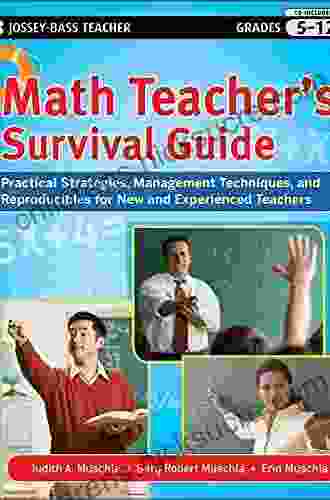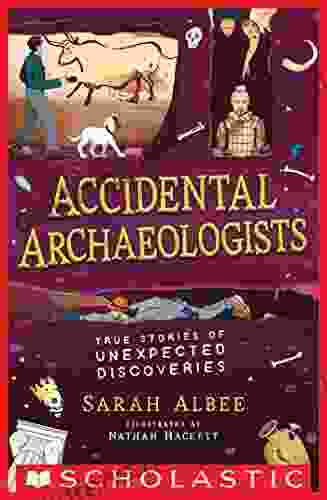Practical Strategies, Management Techniques, and Reproducibles for New and Aspiring Instructional Designers

Instructional design is a specialized field that involves the systematic development and delivery of instructional materials and experiences. As an instructional designer, you play a pivotal role in creating engaging and effective learning environments that meet the specific needs of your learners. This article will provide you with practical strategies, management techniques, and reproducible resources to enhance your skills and excel in your role as a new or aspiring instructional designer.
Understanding the Principles of Instructional Design
Before delving into specific strategies and techniques, it's essential to have a foundational understanding of the principles of instructional design. The ADDIE model, which stands for Analysis, Design, Development, Implementation, and Evaluation, is a widely accepted framework that guides the instructional design process. Each phase of the ADDIE model involves distinct tasks and deliverables that contribute to the overall effectiveness of the instructional materials and experiences.
4.6 out of 5
| Language | : | English |
| File size | : | 6778 KB |
| Text-to-Speech | : | Enabled |
| Screen Reader | : | Supported |
| Enhanced typesetting | : | Enabled |
| Word Wise | : | Enabled |
| Print length | : | 531 pages |
| Lending | : | Enabled |
1. Analysis Phase
In the analysis phase, you gather information about your learners, their learning objectives, and the context in which the instruction will take place. This information helps you identify the specific learning needs and design materials that are tailored to the learners' unique characteristics and requirements.
2. Design Phase
During the design phase, you create a blueprint for the instructional materials and experiences. This includes developing learning objectives, selecting appropriate instructional strategies and activities, and designing the overall structure and sequence of the instruction.
3. Development Phase
In the development phase, you create the actual instructional materials, such as presentations, online modules, videos, and interactive simulations. This phase also involves developing any necessary assessments and support materials.
4. Implementation Phase
The implementation phase involves delivering the instructional materials and experiences to the learners. This may include conducting face-to-face training sessions, launching online courses, or providing on-the-job support.
5. Evaluation Phase
The evaluation phase involves assessing the effectiveness of the instructional materials and experiences. This includes collecting feedback from learners, measuring learning outcomes, and making any necessary adjustments to improve the instruction in the future.
Practical Strategies for Effective Instructional Design
Now that you have a solid understanding of the principles of instructional design, let's explore some practical strategies to enhance your effectiveness as an instructional designer:
1. Use a Learner-Centered Approach
Always keep your learners at the center of your instructional design process. Understand their learning styles, motivations, and unique needs. Tailor your materials and experiences to meet their individual requirements, ensuring that the instruction is relevant, engaging, and accessible to all.
2. Leverage Technology Effectively
Technology can be a powerful tool for enhancing instructional design. Use a variety of technologies, such as online learning platforms, interactive simulations, and mobile learning apps, to create engaging and interactive learning experiences. However, always remember that technology should be a tool to facilitate learning, not an end in itself.
3. Promote Active Learning
Encourage learners to actively participate in the learning process. Design activities that require learners to interact with the material, such as discussions, simulations, or problem-solving exercises. Active learning promotes deeper understanding and retention of the material.
4. Provide Timely and Meaningful Feedback
Feedback is essential for effective learning. Provide learners with timely and meaningful feedback throughout the instructional process. This feedback should be specific, actionable, and relevant to the learning objectives.
5. Collaborate with Subject Matter Experts
Instructional designers often work closely with subject matter experts (SMEs) who provide content knowledge and expertise. Establish a strong partnership with SMEs to ensure that the instructional materials and experiences are accurate, up-to-date, and align with the desired learning outcomes.
Management Techniques for Instructional Designers
Along with strong instructional design skills, effective management techniques are crucial for success in the field. Here are some techniques to help you manage your projects and tasks:
1. Set Clear Goals and Objectives
Start each project by defining clear goals and objectives. This will provide you with a roadmap for your work and help you stay focused and organized.
2. Plan and Prioritize Tasks
Use task management tools to plan and prioritize your tasks. Break down large projects into smaller, manageable chunks, and assign deadlines for each task. This will help you stay on track and avoid feeling overwhelmed.
3. Delegate Effectively
If possible, delegate tasks to other team members or colleagues. This will free up your time to focus on higher-level tasks and ensure that the project is completed efficiently.
4. Track Progress and Make Adjustments
Regularly track the progress of your projects and tasks. Identify any potential roadblocks or delays, and take proactive steps to address them. Be prepared to make adjustments to your plans as needed.
5. Seek Feedback and Continuous Improvement
Regularly seek feedback from your team members, learners, and stakeholders. Use this feedback to identify areas for improvement and make necessary adjustments to your instructional design and management practices.
Reproducibles for New and Aspiring Instructional Designers
To support your journey as a new or aspiring instructional designer, here are some reproducible resources that you can use:
1. Instructional Design Planning Template
Use this template to outline your instructional design projects, including learning objectives, instructional strategies, and assessment plans.
2. Storyboard Template
Use this template to create visual representations of your instructional materials, including slides, videos, or interactive simulations.
3. Learner Analysis Questionnaire
Use this questionnaire to gather information about your learners, including their learning styles, prior knowledge, and motivations.
4. Project Management Checklist
Use this checklist to track the progress of your instructional design projects and ensure that all tasks are completed on time and within budget.
5. Feedback Request Form
Use this form to solicit feedback from learners, team members, and stakeholders on your instructional materials and experiences.
As a new or aspiring instructional designer, you have the opportunity to make a significant impact on the learning and development of others. By understanding the principles of instructional design, employing practical strategies, utilizing efficient management techniques, and using reproducible resources, you can excel in your role and create engaging and effective learning environments for your learners. Remember to embrace continuous improvement and seek out opportunities to enhance your skills and knowledge throughout your career.
4.6 out of 5
| Language | : | English |
| File size | : | 6778 KB |
| Text-to-Speech | : | Enabled |
| Screen Reader | : | Supported |
| Enhanced typesetting | : | Enabled |
| Word Wise | : | Enabled |
| Print length | : | 531 pages |
| Lending | : | Enabled |
Do you want to contribute by writing guest posts on this blog?
Please contact us and send us a resume of previous articles that you have written.
 Fiction
Fiction Non Fiction
Non Fiction Romance
Romance Mystery
Mystery Thriller
Thriller SciFi
SciFi Fantasy
Fantasy Horror
Horror Biography
Biography Selfhelp
Selfhelp Business
Business History
History Classics
Classics Poetry
Poetry Childrens
Childrens Young Adult
Young Adult Educational
Educational Cooking
Cooking Travel
Travel Lifestyle
Lifestyle Spirituality
Spirituality Health
Health Fitness
Fitness Technology
Technology Science
Science Arts
Arts Crafts
Crafts DIY
DIY Gardening
Gardening Petcare
Petcare Christina Mcghee
Christina Mcghee Tracy Wolff
Tracy Wolff Emile Durkheim
Emile Durkheim Christof Koch
Christof Koch Ben Magid
Ben Magid Josh Kaufman
Josh Kaufman Sharon Cameron
Sharon Cameron Douglas Axe
Douglas Axe Samuel G Puryear
Samuel G Puryear Johnny Molloy
Johnny Molloy Jack O Connor
Jack O Connor Julian Guthrie
Julian Guthrie Robert H Shumway
Robert H Shumway Michael Kranish
Michael Kranish Martin L Kutscher
Martin L Kutscher Chad Wesley Smith
Chad Wesley Smith Will Murray
Will Murray Tabatha Chansard Phd
Tabatha Chansard Phd Deena Kastor
Deena Kastor Je Earl
Je Earl Karen Lynch
Karen Lynch William Lee
William Lee Bob Greene
Bob Greene Rico Austin
Rico Austin Vera Snow
Vera Snow Brook Waters
Brook Waters John Feinstein
John Feinstein William J Ray
William J Ray Katherine Keith
Katherine Keith Lisa Hoehn
Lisa Hoehn Presh Talwalkar
Presh Talwalkar Sarah Albee
Sarah Albee Duncan Van Dusen
Duncan Van Dusen Joe Fox
Joe Fox Anthony Castrovince
Anthony Castrovince Ann Bingham
Ann Bingham Kristen S Kurland
Kristen S Kurland Russ Mitchell
Russ Mitchell Michael Deshotels
Michael Deshotels Govert Schilling
Govert Schilling Justin Mcelroy
Justin Mcelroy Discover Press
Discover Press Barry Correia
Barry Correia Stephen G Post
Stephen G Post Becky Choi
Becky Choi David J Wallin
David J Wallin Paul Hough
Paul Hough Angie Papple Johnston
Angie Papple Johnston Steve Economides
Steve Economides One Exam Prep
One Exam Prep Molly Harper
Molly Harper Jena Pincott
Jena Pincott Mark Chang
Mark Chang Dale Peterson
Dale Peterson Jessica Redland
Jessica Redland Gregory J Stewart
Gregory J Stewart Chris Matakas
Chris Matakas Jerry C Whitaker
Jerry C Whitaker Peter Croker
Peter Croker Jazmine Mccoy
Jazmine Mccoy Marley Hall
Marley Hall Frederick Lewis Allen
Frederick Lewis Allen Paul Twitchell
Paul Twitchell Beth Cavenaugh
Beth Cavenaugh Persia Woolley
Persia Woolley Katherine Nichols
Katherine Nichols Laura M Ahearn
Laura M Ahearn John J Kaag
John J Kaag Laurie Varga
Laurie Varga Joan Didion
Joan Didion Richard Paul Evans
Richard Paul Evans Elizabeth G Harper
Elizabeth G Harper Tabatha Yeatts
Tabatha Yeatts Jean Rose
Jean Rose Felicity Aston
Felicity Aston Gary Sutherland
Gary Sutherland Intisar Khanani
Intisar Khanani Imogen Barnacle
Imogen Barnacle Ray Dozier
Ray Dozier David Rakel
David Rakel Jeff A Johnson
Jeff A Johnson Elizabeth Wayland Barber
Elizabeth Wayland Barber Brian Smith
Brian Smith Lisa Gardner
Lisa Gardner Quinn Loftis
Quinn Loftis Shirley Maclaine
Shirley Maclaine Sara Dykman
Sara Dykman Nikki Goth Itoi
Nikki Goth Itoi Robin Esrock
Robin Esrock Emma Anne Bellamy
Emma Anne Bellamy Karl Deisseroth
Karl Deisseroth Dr Tracy Sanders
Dr Tracy Sanders Waysun Liao
Waysun Liao Doug Cook
Doug Cook Karen Jettmar
Karen Jettmar Paul Vachon
Paul Vachon Dr Mike Dilkes
Dr Mike Dilkes Magnus D Jango
Magnus D Jango Tom Dokken
Tom Dokken Michael S A Graziano
Michael S A Graziano Wendy Mogel
Wendy Mogel Shel Banks
Shel Banks Jon G Hughes
Jon G Hughes David J Lieberman
David J Lieberman Kamran Nazeer
Kamran Nazeer Dick Crouser
Dick Crouser Ava Richardson
Ava Richardson Sharan B Merriam
Sharan B Merriam Clinton Bailey
Clinton Bailey Daxton Wilde
Daxton Wilde Judith A Muschla
Judith A Muschla Sean Vigue
Sean Vigue Warren Berger
Warren Berger Joe Shuber
Joe Shuber Philip P Massaro
Philip P Massaro Vivienne Crow
Vivienne Crow Peter Liljedahl
Peter Liljedahl Sandra Cisneros
Sandra Cisneros Caleb Lee
Caleb Lee Art Clepper
Art Clepper Anjeanette Carter
Anjeanette Carter Rebecca Rolland
Rebecca Rolland John Frohnmayer
John Frohnmayer Gina Atencio Maclean Psyd
Gina Atencio Maclean Psyd Gail Carriger
Gail Carriger Flor M Salvador
Flor M Salvador Martina Sprague
Martina Sprague Don Jose Ruiz
Don Jose Ruiz Sara Wolf
Sara Wolf Kathy Borkoski
Kathy Borkoski Reed Mangels
Reed Mangels Nicholas Wade
Nicholas Wade J Budziszewski
J Budziszewski Richard J Davidson
Richard J Davidson Alana Ash
Alana Ash Ann Mariah Cook
Ann Mariah Cook Lindsey Hutchinson
Lindsey Hutchinson Steven Dillon
Steven Dillon Donovan Buck
Donovan Buck Namit Arora
Namit Arora Elena Delle Donne
Elena Delle Donne Peter Galison
Peter Galison Julie Watson
Julie Watson Mike Lowery
Mike Lowery Kumiko Makihara
Kumiko Makihara Brendan Leonard
Brendan Leonard Dominique Pearson
Dominique Pearson Sandra Steingraber
Sandra Steingraber Ray Walker
Ray Walker Marke Bieschke
Marke Bieschke Kalman Samuels
Kalman Samuels Jean Molesky Poz
Jean Molesky Poz Jack El Hai
Jack El Hai Tami Oldham Ashcraft
Tami Oldham Ashcraft Mark Mayfield
Mark Mayfield Jeff Deters
Jeff Deters Benedict Go
Benedict Go Elisa S Amore
Elisa S Amore Isla Gordon
Isla Gordon Laurence Gonzales
Laurence Gonzales Len Kravitz
Len Kravitz John Novosel
John Novosel Hippocrates
Hippocrates Frank X Sutman
Frank X Sutman Terry Leiden
Terry Leiden Shane Frederick
Shane Frederick John Monyjok Maluth
John Monyjok Maluth Hugh Harris
Hugh Harris Dean Karnazes
Dean Karnazes Miyamoto Musashi
Miyamoto Musashi Jason Rosenhouse
Jason Rosenhouse Judy Cannato
Judy Cannato Nick Clausen
Nick Clausen Bill Fowler
Bill Fowler Edward O Thorp
Edward O Thorp Brent E Turvey
Brent E Turvey Marck Vaisman
Marck Vaisman Miles Cameron
Miles Cameron Felice Benuzzi
Felice Benuzzi Peter Feinman
Peter Feinman Sadie Word
Sadie Word Chris Townsend
Chris Townsend Ann Bausum
Ann Bausum Emma Hansen
Emma Hansen Frank Falcinelli
Frank Falcinelli Jeremy Griffith
Jeremy Griffith Laurie R King
Laurie R King Danielle Centoni
Danielle Centoni Johnegreek
Johnegreek Bill Bishop
Bill Bishop Brian Platzer
Brian Platzer Melissa Watson
Melissa Watson Michael Harner
Michael Harner Sean Parker Dennison
Sean Parker Dennison Larry Greene
Larry Greene Darlene D Pedersen
Darlene D Pedersen William H Parker
William H Parker Illustrated Edition Kindle Edition
Illustrated Edition Kindle Edition Dr Richard L Travis
Dr Richard L Travis Scholastic
Scholastic D J Taylor
D J Taylor Phil G Tang
Phil G Tang Jody Vasquez
Jody Vasquez Richard Rorty
Richard Rorty Lori Morrison
Lori Morrison T Chris Riley Tillman
T Chris Riley Tillman Jenny Carr
Jenny Carr Frank Mastini
Frank Mastini Dr Gareth Moore
Dr Gareth Moore J M Adovasio
J M Adovasio Susanne Elizabeth Freidberg
Susanne Elizabeth Freidberg Kaylind Olson
Kaylind Olson Eric Hanauer
Eric Hanauer Chuck Robbins
Chuck Robbins Sarah J Tracy
Sarah J Tracy Bruce Feiler
Bruce Feiler Rick Clark
Rick Clark David Deming
David Deming Norman Hall
Norman Hall Deborah Reber
Deborah Reber Edward B Fiske
Edward B Fiske Roasted Rat
Roasted Rat J W Lynne
J W Lynne Nouaoui Khedidja
Nouaoui Khedidja Helen Yang
Helen Yang Jimmy Song
Jimmy Song Ronald M Holmes
Ronald M Holmes Anita Biase
Anita Biase Jim Burris
Jim Burris Nicholaos Kehagias
Nicholaos Kehagias David Poyer
David Poyer Michelle Hercules
Michelle Hercules Brianna Madia
Brianna Madia Jean Paul Pequegnot
Jean Paul Pequegnot Megan Hallett
Megan Hallett Anil Ananthaswamy
Anil Ananthaswamy Ann Leary
Ann Leary Gordon Forbes
Gordon Forbes Imre Lakatos
Imre Lakatos Peter Julius Sloan
Peter Julius Sloan Stewart Pearce
Stewart Pearce Douglas Turkington
Douglas Turkington Mari Silva
Mari Silva Thomas Lewis
Thomas Lewis William S Frisbee Jr
William S Frisbee Jr Wendy Lyons Sunshine
Wendy Lyons Sunshine Shalane Flanagan
Shalane Flanagan Julie Knutson
Julie Knutson David M Gitlitz
David M Gitlitz Shonda Schilling
Shonda Schilling Lara Maiklem
Lara Maiklem Rosanne S Mchenry
Rosanne S Mchenry Joshua Slocum
Joshua Slocum Wendy Moore
Wendy Moore Jennifer Dugan
Jennifer Dugan Rob Kelley
Rob Kelley Val Waldeck
Val Waldeck Eugene Hecht
Eugene Hecht Ann Douglas
Ann Douglas Robert Edelman
Robert Edelman John Heart
John Heart Paul Stewart
Paul Stewart Eric B Taylor
Eric B Taylor Iri Cermak
Iri Cermak Henny Bogan
Henny Bogan Eliot Cowan
Eliot Cowan Scott Keyes
Scott Keyes Tommy Shea
Tommy Shea Peter Wacht
Peter Wacht Robert G Bugge
Robert G Bugge Remmi Smith
Remmi Smith Kit Deslauriers
Kit Deslauriers Max Kuhn
Max Kuhn Joy Bauer
Joy Bauer Bruce Gregor Hodge
Bruce Gregor Hodge James Freeman
James Freeman Stan Lee
Stan Lee Jeff Driscoll
Jeff Driscoll Mark Bertin Md
Mark Bertin Md Terry Hill
Terry Hill Jason Aaron
Jason Aaron Rebecca M Warner
Rebecca M Warner Willie Mosconi
Willie Mosconi Michele Caputo
Michele Caputo Tim Guest
Tim Guest Lindsey Fitzharris
Lindsey Fitzharris Rachel Hartman
Rachel Hartman Gavin Atkin
Gavin Atkin Kate Bowler
Kate Bowler Emily R King
Emily R King Ann Cameron
Ann Cameron Grant Mcomie
Grant Mcomie Anja Beran
Anja Beran Deborah J Bennett
Deborah J Bennett Scott Cunningham
Scott Cunningham Elwyn Hayes
Elwyn Hayes John Romer
John Romer Michael Yessis
Michael Yessis Jenna Tinsley
Jenna Tinsley Sue C Funnell
Sue C Funnell Victoria Clarke
Victoria Clarke Tanya Holland
Tanya Holland Ann Chamberlin
Ann Chamberlin Susie Albert Miller
Susie Albert Miller Robert Jervis
Robert Jervis Erling Kagge
Erling Kagge Jennifer Harvey
Jennifer Harvey Ed Robinson
Ed Robinson Oliver Horovitz
Oliver Horovitz Gary Robert Muschla
Gary Robert Muschla Enrique Desmond Arias
Enrique Desmond Arias Mia Collins Parker
Mia Collins Parker Sarah Pink
Sarah Pink Julius Evola
Julius Evola Angelo Tropea
Angelo Tropea Eric Wargo
Eric Wargo Thomas Thompson
Thomas Thompson Mary O Hora
Mary O Hora Ryan Boudreaux
Ryan Boudreaux Comni S Art Publishing
Comni S Art Publishing Henry A Giroux
Henry A Giroux Larry Mueller
Larry Mueller Tony Butt
Tony Butt Judy Goodspeed
Judy Goodspeed Colin Rees
Colin Rees Sara Zaske
Sara Zaske R H Charles
R H Charles Erin Davis
Erin Davis Michael Harris
Michael Harris David E Maranz
David E Maranz Evelyn Monahan
Evelyn Monahan Carl J Pratt
Carl J Pratt Rc Blakes Jr
Rc Blakes Jr Buster Holmes
Buster Holmes Marissa Zwetow Lmft
Marissa Zwetow Lmft Robin Barrett
Robin Barrett Stanley Vestal
Stanley Vestal Janet Renner
Janet Renner Lin Lougheed
Lin Lougheed Christina Tosch
Christina Tosch Robert A Sadowski
Robert A Sadowski Yuri Kitayama
Yuri Kitayama Joshua Glenn
Joshua Glenn Lisa Charlebois
Lisa Charlebois Charlene Beswick
Charlene Beswick Damo Mitchell
Damo Mitchell Janet Patkowa
Janet Patkowa Shannon Greenland
Shannon Greenland M K Hume
M K Hume David Roche
David Roche Ania G
Ania G Tyler Feder
Tyler Feder Brian Burke
Brian Burke Elliott Mendelson
Elliott Mendelson Jade Mckenzie Stone
Jade Mckenzie Stone Alex Bonham
Alex Bonham Jim Grimsley
Jim Grimsley Dickie Bird
Dickie Bird Iain Mccalman
Iain Mccalman Ryan Tandler
Ryan Tandler Jennie Germann Molz
Jennie Germann Molz Anita Knight Kuhnley
Anita Knight Kuhnley Angie Stanton
Angie Stanton John Brockman
John Brockman James Campbell
James Campbell Robison Wells
Robison Wells Steph Jagger
Steph Jagger Sherman Dickinson
Sherman Dickinson Susan Zimmermann
Susan Zimmermann Michael Easter
Michael Easter Ariel Dalfen
Ariel Dalfen Tahereh Mafi
Tahereh Mafi Joanna Nylund
Joanna Nylund Nick Schade
Nick Schade L R Shorter
L R Shorter Jessica Hall
Jessica Hall Bruce Ackerberg
Bruce Ackerberg L A Cotton
L A Cotton James A Fain
James A Fain Paul Fowler
Paul Fowler Beth A Grosshans
Beth A Grosshans Paul Volponi
Paul Volponi Mark Wilson
Mark Wilson Emily Teeter
Emily Teeter Ichigo Takano
Ichigo Takano Kristin Knight Pace
Kristin Knight Pace Sherri Mitchell
Sherri Mitchell Clayton Geoffreys
Clayton Geoffreys Ann Marie Brown
Ann Marie Brown Darren Kirby
Darren Kirby Daniel Harman
Daniel Harman Nancy Ellen Abrams
Nancy Ellen Abrams Sean Deveney
Sean Deveney Angie Thomas
Angie Thomas Hunter S Fulghum
Hunter S Fulghum Tracy Salcedo
Tracy Salcedo Oswald Rivera
Oswald Rivera Patricia Ann Lynch
Patricia Ann Lynch Anita Cortez
Anita Cortez 2nd Edition Kindle Edition
2nd Edition Kindle Edition Kathy Fray
Kathy Fray Weston Ochse
Weston Ochse Julie Cwikla Phd
Julie Cwikla Phd Eric Alpenfels
Eric Alpenfels Steph Davis
Steph Davis Sharlene Healy
Sharlene Healy Ann Israel
Ann Israel Nims Purja
Nims Purja Sherrie Eldridge
Sherrie Eldridge Simon Boulter
Simon Boulter Cgp Books
Cgp Books Pete Earley
Pete Earley Tri Thong Dang
Tri Thong Dang Tennille Chaffin
Tennille Chaffin Fred Heath
Fred Heath Rae Brewer
Rae Brewer James Nickells
James Nickells Tom Mole
Tom Mole Stu Ingraham
Stu Ingraham Cynthia Miller Idriss
Cynthia Miller Idriss J L Heilbron
J L Heilbron Joshua Straub
Joshua Straub Stephanie Garber
Stephanie Garber Emiko Jean
Emiko Jean Little Mat
Little Mat Rachel Levin
Rachel Levin Dan Hicks
Dan Hicks Chris Dombrowski
Chris Dombrowski Poul Anderson
Poul Anderson Simon Winchester
Simon Winchester Marc Weissbluth M D
Marc Weissbluth M D Marc Roche
Marc Roche Phoenix Nature
Phoenix Nature Sadie Lake
Sadie Lake Behrouz Moemeni
Behrouz Moemeni Helen Czerski
Helen Czerski Frances Gies
Frances Gies Sankofa Ra
Sankofa Ra Ann Cook
Ann Cook Kevin Callan
Kevin Callan Mayur Movalia
Mayur Movalia Steven Cowie
Steven Cowie Kenneth Wilgus Phd
Kenneth Wilgus Phd Richard Weaver
Richard Weaver Myron Mixon
Myron Mixon Vicki Lansky
Vicki Lansky Julie Gianelloni Connor
Julie Gianelloni Connor Tina Payne Bryson
Tina Payne Bryson Guy Deutscher
Guy Deutscher Brian Hayden
Brian Hayden Max M Houck
Max M Houck Daniel Paolicchi
Daniel Paolicchi George Hincapie
George Hincapie Neil Smith
Neil Smith Don Larsen
Don Larsen Bob Stegner
Bob Stegner Deborah Hunter Kells
Deborah Hunter Kells Ann Imig
Ann Imig Tim Leffel
Tim Leffel F C Yee
F C Yee J M Thompson
J M Thompson Bookrags Com
Bookrags Com Jan Witkowski
Jan Witkowski Natale Barca
Natale Barca Baby Professor
Baby Professor Dick Pobst
Dick Pobst John Krige
John Krige Terry Tempest Williams
Terry Tempest Williams Michael Edelson
Michael Edelson Dorothy Roberts
Dorothy Roberts Tyler Ninja Blevins
Tyler Ninja Blevins Scott Haugen
Scott Haugen Jane Goodall
Jane Goodall Elissa Altman
Elissa Altman Wade Bourne
Wade Bourne Ron Rhodes
Ron Rhodes Kim Loraine
Kim Loraine Sharon N Covington
Sharon N Covington Tim Kimmel
Tim Kimmel Aditya Chatterjee
Aditya Chatterjee Kevin Robbins
Kevin Robbins Joshua Wright
Joshua Wright Shannon Philpott Sanders
Shannon Philpott Sanders Al Goldis
Al Goldis Cindy Hudson
Cindy Hudson Ray Bergman
Ray Bergman Paul Eng
Paul Eng Carla Hall
Carla Hall Jada Fisher
Jada Fisher Peter Lee
Peter Lee Antonia Malchik
Antonia Malchik Stephane Cazeault
Stephane Cazeault David Robert Grimes
David Robert Grimes Dale Grdnic
Dale Grdnic Benjamin T Mast
Benjamin T Mast Mary Helen Bowers
Mary Helen Bowers Cathy Glass
Cathy Glass Richard Karban
Richard Karban Bryson Payne
Bryson Payne Scott Douglas
Scott Douglas Beth Berry
Beth Berry J M Gregson
J M Gregson Graham Allcott
Graham Allcott
Light bulbAdvertise smarter! Our strategic ad space ensures maximum exposure. Reserve your spot today!

 Desmond FosterThe Ultimate Fertility Diet for Beginners: A Comprehensive Guide to Boosting...
Desmond FosterThe Ultimate Fertility Diet for Beginners: A Comprehensive Guide to Boosting... George HayesFollow ·6.4k
George HayesFollow ·6.4k Colby CoxFollow ·2.3k
Colby CoxFollow ·2.3k Isaiah PowellFollow ·6k
Isaiah PowellFollow ·6k Chinua AchebeFollow ·10.6k
Chinua AchebeFollow ·10.6k Everett BellFollow ·11.2k
Everett BellFollow ·11.2k Neil ParkerFollow ·8.4k
Neil ParkerFollow ·8.4k Brian WestFollow ·13.7k
Brian WestFollow ·13.7k Jeffrey HayesFollow ·7.8k
Jeffrey HayesFollow ·7.8k

 Ernest J. Gaines
Ernest J. GainesMy Golf Blog Revolution: Open Stance
Are you ready to revolutionize your golf...

 Gene Powell
Gene PowellThe Unparalleled Genius of Calculus Volume Ichigo Takano:...
: The Birth of a...

 Edgar Hayes
Edgar HayesChild of the Northern Spring: A Journey of Discovery and...
In the heart of...

 Anthony Wells
Anthony WellsHybrid Aria: A Harmonious Blend of Modern Comfort and...
In the heart of a bustling...
4.6 out of 5
| Language | : | English |
| File size | : | 6778 KB |
| Text-to-Speech | : | Enabled |
| Screen Reader | : | Supported |
| Enhanced typesetting | : | Enabled |
| Word Wise | : | Enabled |
| Print length | : | 531 pages |
| Lending | : | Enabled |














